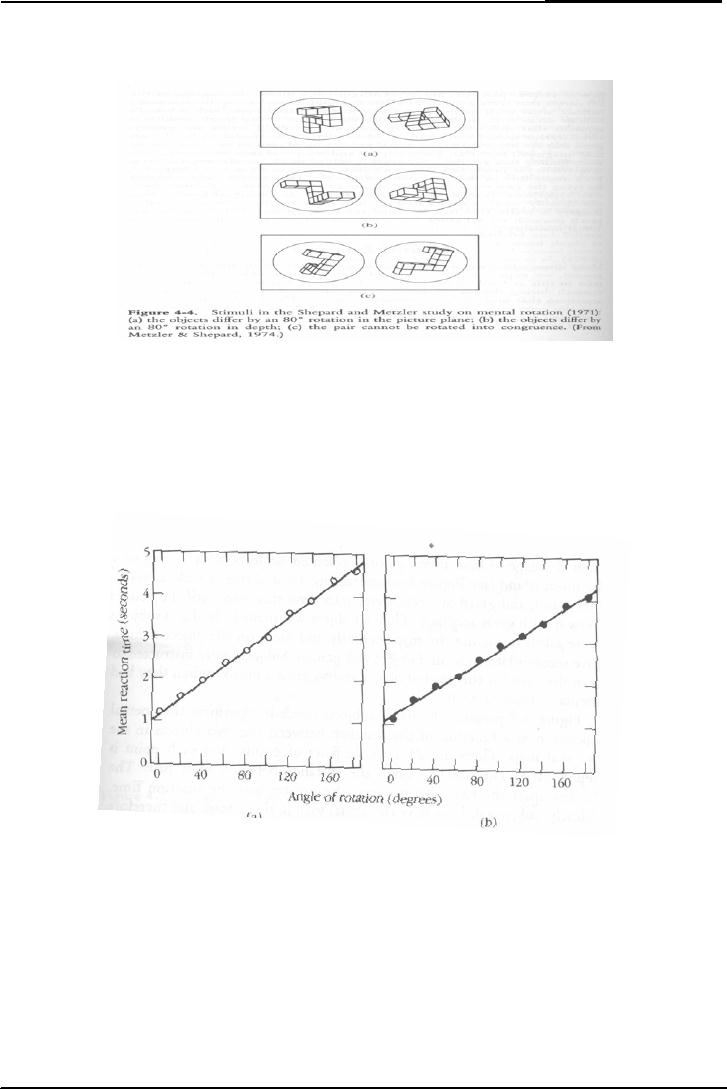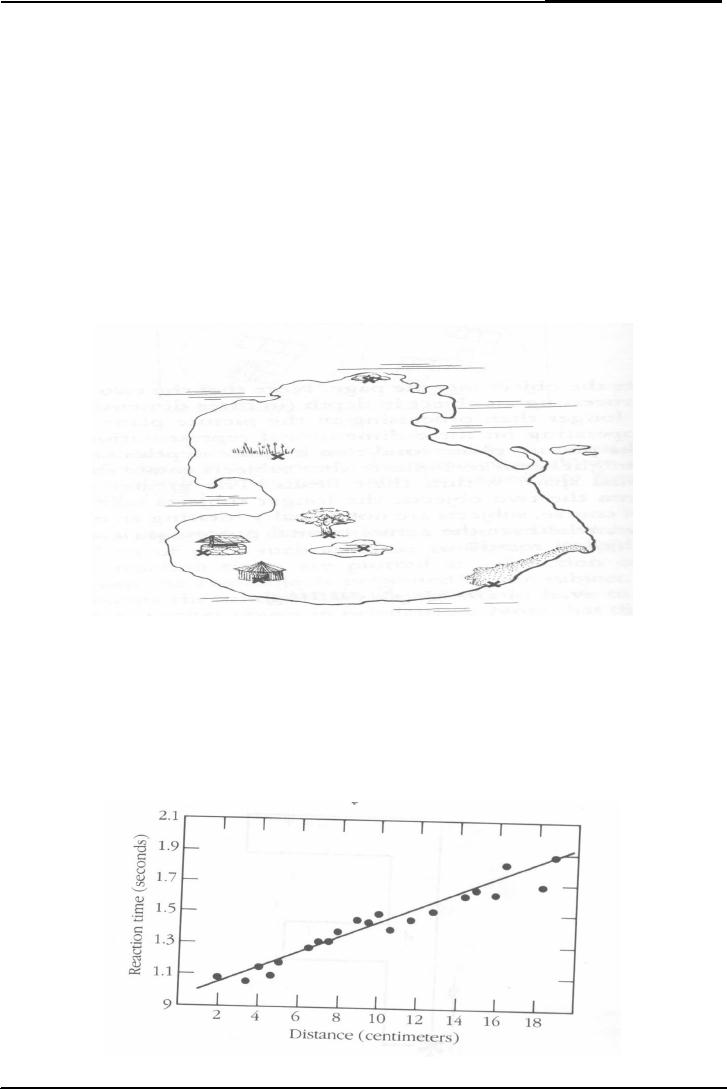 |

Cognitive
Psychology PSY 504
VU
Lecture
40
Memory
Study
Methods
It
is one area where you
can apply all the
knowledge that we require
the cognitive
psychology
based
on the experimental research
and the all different
models have been come
out and use it
to
the advantage. So it is very
important in almost every
field and it is developing
rapidly. So the
important
methods are;
Method
of Loci
1
PQ4R
Method
2
Elaborate
3
Spacing
Effect
4
Encoding
variability
5
Analyze
Story Structure
When
you are studying a story
you must analyze its
structure. You must analyze
its:
Setting:
Time and Place
Theme:
main goals of
characters.
Plot:
sequence of events related to
achieving goals in the
narrative.
Resolution:
The outcome of events
Causal
relations
Use
Multiple Modalities
Another
important thing is learn by
using multiple modalities. You
must store information
visually
and
verbally. Try and learn
the information in different
ways. No or minimal interference in
Short
Term
Memory between one source
and another.
Mental
Imagery
Many
times when we are thinking
about a scene an object no
longer present, we experience
an
image
of that scene or object.
People often refer to this
as "Seeing in one's mind".
The important
question
in mental imagery is,
What
is the nature of knowledge
representations that underlie
mental imagery?
These
representations are called
mental images. Much of this
research has been concerned
with
the
types of mental processes
that can be performed on
spatial images.
Analog
versus Digital
Analog
and digital representation is
also very important debate
in mental imagery as well.
Analog
representation
is a representation of anything in same
form. But in digital
representation we see
and
imagine the thing in
parts.
117

Cognitive
Psychology PSY 504
VU
Mental
Rotation
Shepard
and Metzler's (1971)
experiment
Shepard
and Metzler (1971) conducted
an experiment. In that subject
the subjects were
presented
with pairs of two
dimensional representations of three
dimensional objects like
those in
above
figure. Their task was to
determine if the objects
were identical except for
orientation. The
two
figures in parts (a) and
(b) are identical; they
are just presented at
different orientations.
Subjects
report that to match the
two shapes they rotated
one of the objects in each
pair mentally
until
it was congruent one object
so that it is identical with
the other.
Results
The
results are shown in this
graph
The
graphs in above figures show
the time required for
subjects to decide that the
members of
pairs
such as those in figures (a)
and (b) were identical.
The reaction times are
plotted as a
function
of the angular disparity
between the two objects
presented to the subject.
This angular
disparity
between the two objects
represents the amount one
object would have to be
rotated in
order
to match the other object in
orientation.
These
data might seem to indicate
that subjects rotate the
object in a three-dimensional
space
within
their heads. The greater
the angle of disparity
between the two objects,
the longer subjects
takes
to complete the rotation. Of
course, subjects are not
actually rotating an object in
their
heads.
However, whatever the actual
mental process is, it
appears to be analogous to
physical
rotation.
118

Cognitive
Psychology PSY 504
VU
Steve
Kosslyn
He
worked a lot in imagery. He
gave many theories and
models. He wrote many books
on mental
imagery.
One of his books is "Ghosts
in the Mind's Machine' that
is for layman.
Image
Scanning
Researchers
have looked at a number of
other tasks which seem to
show that when subjects
are
performing
certain mental computations
they are operating on a
visual image the way a
person
might
perform continuous operations on a
physical object.
An
experiment by Kosslyn, Ball &
Reiser (1978) shows that it
takes time to scan between
two
locations
on a mental image. These
investigators presented subjects
with a map of a
factious
island
containing a hut, rock,
grass, tree, well, lake,
sand. Subjects were trained
till could draw it
with
great accuracy. Then asked
to picture the map mentally
and focus on named object. 5
sec
later
another object named, scan
the map for this
object and. Press a button
when they find
it.
The
figure is given
below.
Results
This
graph is presenting the
times needed to perform this
mental operation as a function of
the
distance
between the two objects in
the original map. There
are 21 possible pairs of
points, and
each
point is represented. The
abscissa gives the distance
between each pair. The
farther apart
the
two objects were, the
greater was the reaction
time. Clearly, subjects did
not have the
actual
map
in their heads and there
fore were not moving
from one location in their
heads to a second
location.
However, they were going
through a process analogous to
this physical
operation.
119

Cognitive
Psychology PSY 504
VU
Kosslyn
(again)
Kosslyn
(1995) wrote a book and he
said we do have proves of
images, is it possible the
images
are
actually stored in the form
of propositional knowledge?
Can
a propositional theory that
can represent all types of
knowledge?
The
criticism of people on Kosslyn is
that what about demand
characteristics of the task.
Demand
characteristics
means Subjects try to guess
what the experimenter tries
to do in the experiment
and
what he wants to draw. And
the subjects perform in the
way of experimenter.
Kosslyn
answered the criticism by
talking about neuroscience. He
said the changes in
brain
actually
help us. They don't
involve in demand
characteristics.
The
Evidence
Farah
(1988) has made the
suggestion that there might
be two kinds of imagery, one
that
involves
visual properties and one
that involves spatial
properties. Farah argues
that these same
cortical
regions are used in imagery
tasks that do not involve
any external stimuli. They
argue that
imagery
tasks which involve spatial
judgments will be performed in
the parietal tasks that
require
access
to visual details will be
performed in the temporal
region and will show
modality specific
effects.
Visual imagery uses the
same brain areas as vision.
Selective damage to the
brain
impairs
visual imagery in the same
manner that it impairs
vision. Like Cerebral Blood
Flow, Event
Related
Potential (ERPs)
Occipital
lobes are primary &
secondary visual
cortex.
Imagery
and Athletes
Russian
psychologist Gregory Raiport
(1972-1976) trained athletes to
perform mental
rehearsals.
Good
performance needs practice.
But in every situation
practice is not possible and
physical
practice
also have limit. Gregory
worked on imagery with
athletes to increase their
performance.
The
athletes are taught to
imagine or visualize them
selves performing the
different stages of
the
event.
They found that
neuromuscular practice is very
beneficial and valuable for
athletes.
Athletes
should store moving images
in their minds.
120
Table of Contents:
- INTRODUCTION:Historical Background
- THE INFORMATION PROCESSING APPROACH
- COGNITIVE NEUROPSYCHOLOGY:Brains of Dead People, The Neuron
- COGNITIVE NEUROPSYCHOLOGY (CONTINUED):The Eye, The visual pathway
- COGNITIVE PSYCHOLOGY (CONTINUED):Hubel & Wiesel, Sensory Memory
- VISUAL SENSORY MEMORY EXPERIMENTS (CONTINUED):Psychological Time
- ATTENTION:Single-mindedness, In Shadowing Paradigm, Attention and meaning
- ATTENTION (continued):Implications, Treisman’s Model, Norman’s Model
- ATTENTION (continued):Capacity Models, Arousal, Multimode Theory
- ATTENTION:Subsidiary Task, Capacity Theory, Reaction Time & Accuracy, Implications
- RECAP OF LAST LESSONS:AUTOMATICITY, Automatic Processing
- AUTOMATICITY (continued):Experiment, Implications, Task interference
- AUTOMATICITY (continued):Predicting flight performance, Thought suppression
- PATTERN RECOGNITION:Template Matching Models, Human flexibility
- PATTERN RECOGNITION:Implications, Phonemes, Voicing, Place of articulation
- PATTERN RECOGNITION (continued):Adaptation paradigm
- PATTERN RECOGNITION (continued):Gestalt Theory of Perception
- PATTERN RECOGNITION (continued):Queen Elizabeth’s vase, Palmer (1977)
- OBJECT PERCEPTION (continued):Segmentation, Recognition of object
- ATTENTION & PATTERN RECOGNITION:Word Superiority Effect
- PATTERN RECOGNITION (CONTINUED):Neural Networks, Patterns of connections
- PATTERN RECOGNITION (CONTINUED):Effects of Sentence Context
- MEMORY:Short Term Working Memory, Atkinson & Shiffrin Model
- MEMORY:Rate of forgetting, Size of memory set
- Memory:Activation in a network, Magic number 7, Chunking
- Memory:Chunking, Individual differences in chunking
- MEMORY:THE NATURE OF FORGETTING, Release from PI, Central Executive
- Memory:Atkinson & Shiffrin Model, Long Term Memory, Different kinds of LTM
- Memory:Spread of Activation, Associative Priming, Implications, More Priming
- Memory:Interference, The Critical Assumption, Limited capacity
- Memory:Interference, Historical Memories, Recall versus Recognition
- Memory:Are forgotten memories lost forever?
- Memory:Recognition of lost memories, Representation of knowledge
- Memory:Benefits of Categorization, Levels of Categories
- Memory:Prototype, Rosch and Colleagues, Experiments of Stephen Read
- Memory:Schema Theory, A European Solution, Generalization hierarchies
- Memory:Superset Schemas, Part hierarchy, Slots Have More Schemas
- MEMORY:Representation of knowledge (continued), Memory for stories
- Memory:Representation of knowledge, PQ4R Method, Elaboration
- Memory:Study Methods, Analyze Story Structure, Use Multiple Modalities
- Memory:Mental Imagery, More evidence, Kosslyn yet again, Image Comparison
- Mental Imagery:Eidetic Imagery, Eidetic Psychotherapy, Hot and cold imagery
- Language and thought:Productivity & Regularity, Linguistic Intuition
- Cognitive development:Assimilation, Accommodation, Stage Theory
- Cognitive Development:Gender Identity, Learning Mathematics, Sensory Memory